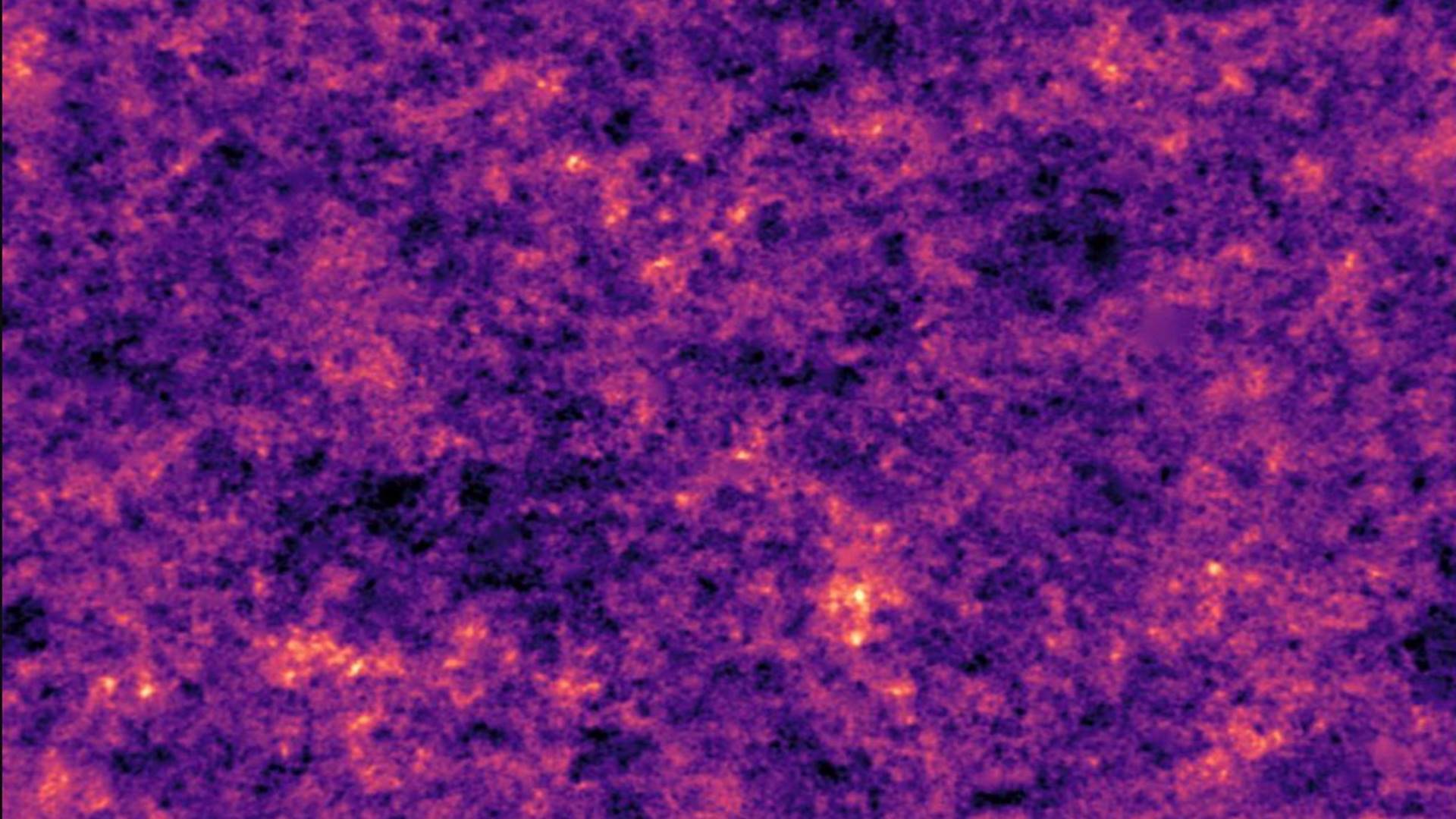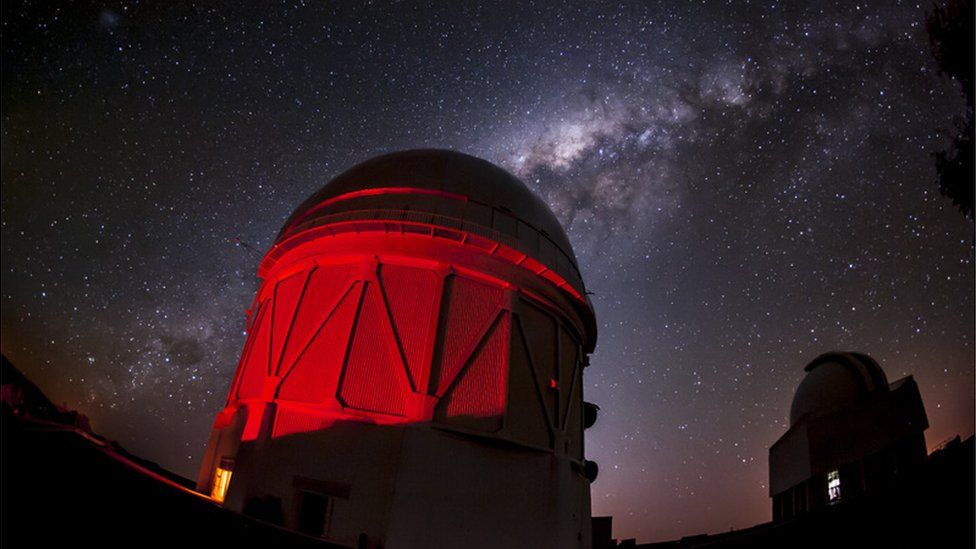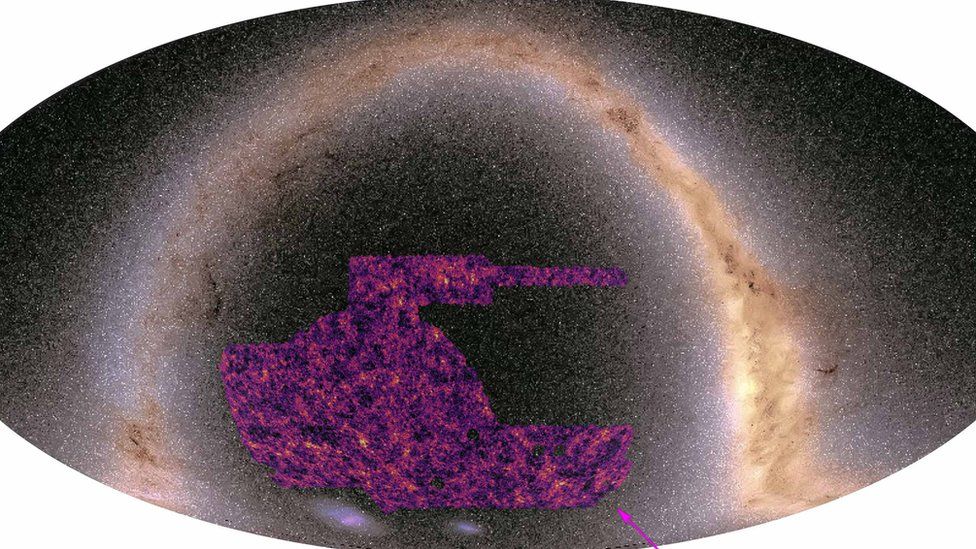New dark matter map reveals cosmic mystery
An international team of researchers has created the largest and most detailed map of the distribution of so-called dark matter in the Universe

image caption This is the most detailed map of the distribution of dark matter in the Universe. The bright areas represent its highest concentrations – which is where galaxies form
The results are a surprise because they show that it is slightly smoother and more spread out than the current best theories predict.
The observation appears to stray from Einstein’s theory of general relativity – posing a conundrum for researchers.
The results have been published by the Dark Energy Survey Collaboration.
Dark Matter is an invisible substance that permeates space. It accounts for 80% of the matter in the Universe.
Astronomers were able to work out where it was because it distorts light from distant stars. The greater the distortion, the greater the concentration of dark matter.
Dr. Niall Jeffrey, of École Normale Supérieure, in Paris, who pieced the map together, said that the result posed a “real problem” for physics.
“If this disparity is true then maybe Einstein was wrong,” he told BBC News. “You might think that this is a bad thing, that maybe physics is broken. But to a physicist, it is extremely exciting. It means that we can find out something new about the way the Universe really is.”
The largest asteroid to pass by Earth this year might be transferring surprisingly fast
Prof Carlos Frenk, of Durham University, who was one of the scientists that built on the work of Albert Einstein and others to develop the current cosmological theory, said he had mixed emotions on hearing the news.
“I spent my life working on this theory and my heart tells me I don’t want to see it collapse. But my brain tells me that the measurements were correct, and we have to look at the possibility of new physics,” said Prof Frenk.
“Then my stomach cringes because we have no solid grounds to explore because we have no theory of physics to guide us. It makes me very nervous and fearful because we are entering a completely unknown domain and who knows what we are going to find.”

image caption100 million galaxies were surveyed at the Victor M Blanco telescope in Chile to produce the map
Using the Victor M Blanco telescope in Chile, the team behind the new work analyzed 100 million galaxies.
The map shows how dark matter sprawls across the Universe. The black areas are vast areas of nothingness, called voids, where the laws of physics might be different. The bright areas are where dark matter is concentrated. They are called “halos” because right in the center is where our reality exists. In their midst are galaxies like our own Milky Way, shining brightly like tiny gems on a vast cosmic web.
Spacewalkers take extra safety precautions for toxic ammonia
According to Dr. Jeffrey, who is also part of a department at University College London, the map, clearly shows that galaxies are part of a larger invisible structure.
“No one in the history of humanity has been able to look out into space and see where dark matter is to such an extent. Astronomers have been able to build pictures of small patches, but we have unveiled vast new swathes which show much more of its structure. For the first time, we can see the Universe in a different way.”

image captionThe oval represents the entire sky, with purple as the area that has been surveyed so far for dark matter. The bright arch is formed from the brightest stars in the night sky
But the new dark matter map is not showing quite what astronomers expected. They have an accurate idea of the distribution of matter 350, 000 years after the Big Bang, from a European Space Agency orbiting observatory called Planck. It measured the radiation still present from that moment, called the cosmic microwave background, or more poetically, the “afterglow of creation”.
Drawing on the ideas of Einstein, astronomers, such as Prof Frenk, developed a model to calculate how the matter should disperse over the next 13.8bn years to the present day. But the actual observations from the new map are out by a few percent – it shows that matter is slightly too evenly spread.
As a result, Prof Frenk thinks there may be big changes afoot in our understanding of the cosmos.
“We may have uncovered something really fundamental about the fabric of the Universe. The current theory rests on very sketchy pillars made of sand. And what we may be seeing is the collapse of one of those pillars.”
But others, such as Prof Ofer Lahav, of University College London, have a more conservative view.
“The big question is whether Einstein’s theory is perfect. It seems to pass every test but with some deviations here and there. Maybe the astrophysics of the galaxies just needs some tweaks. In the history of cosmology, there are examples where problems went away, but also examples when the thinking shifted. It will be fascinating to see if the current ‘tension’ in Cosmology will lead to a new paradigm shift,” he said.
The DES collaboration consists of over 400 scientists from 25 institutions in seven countries.